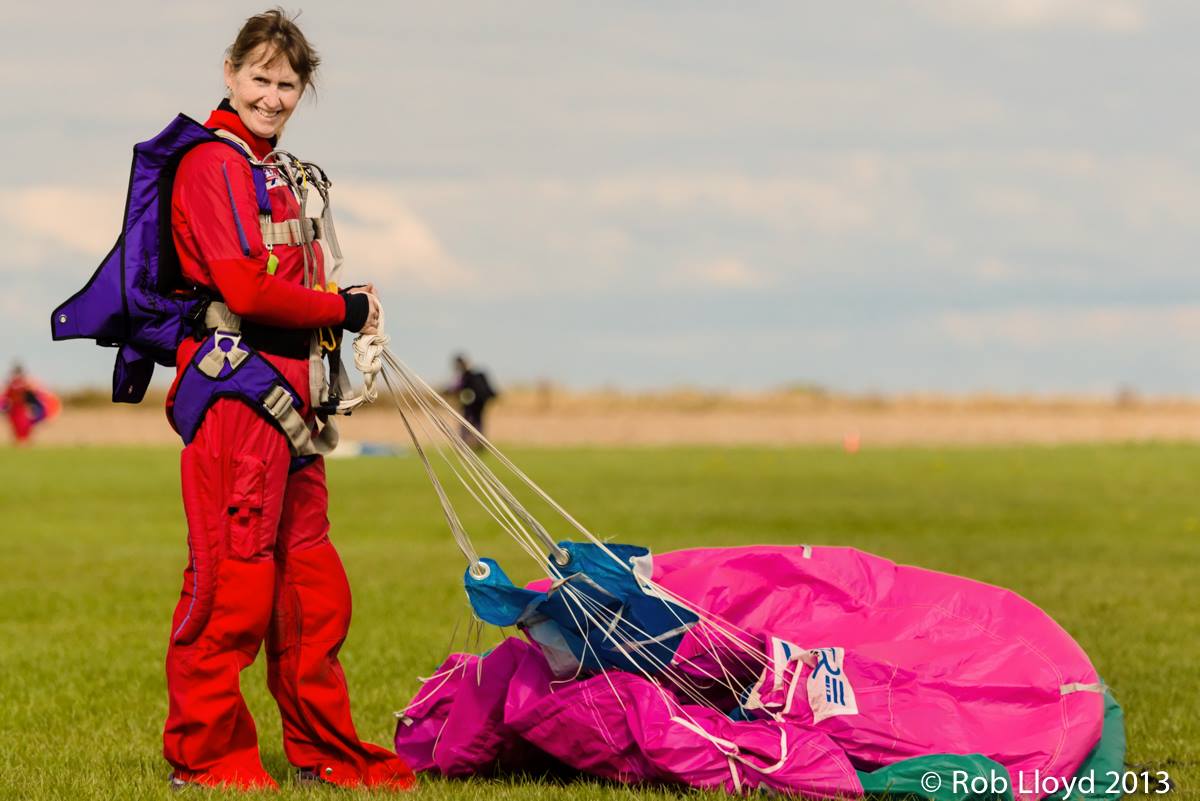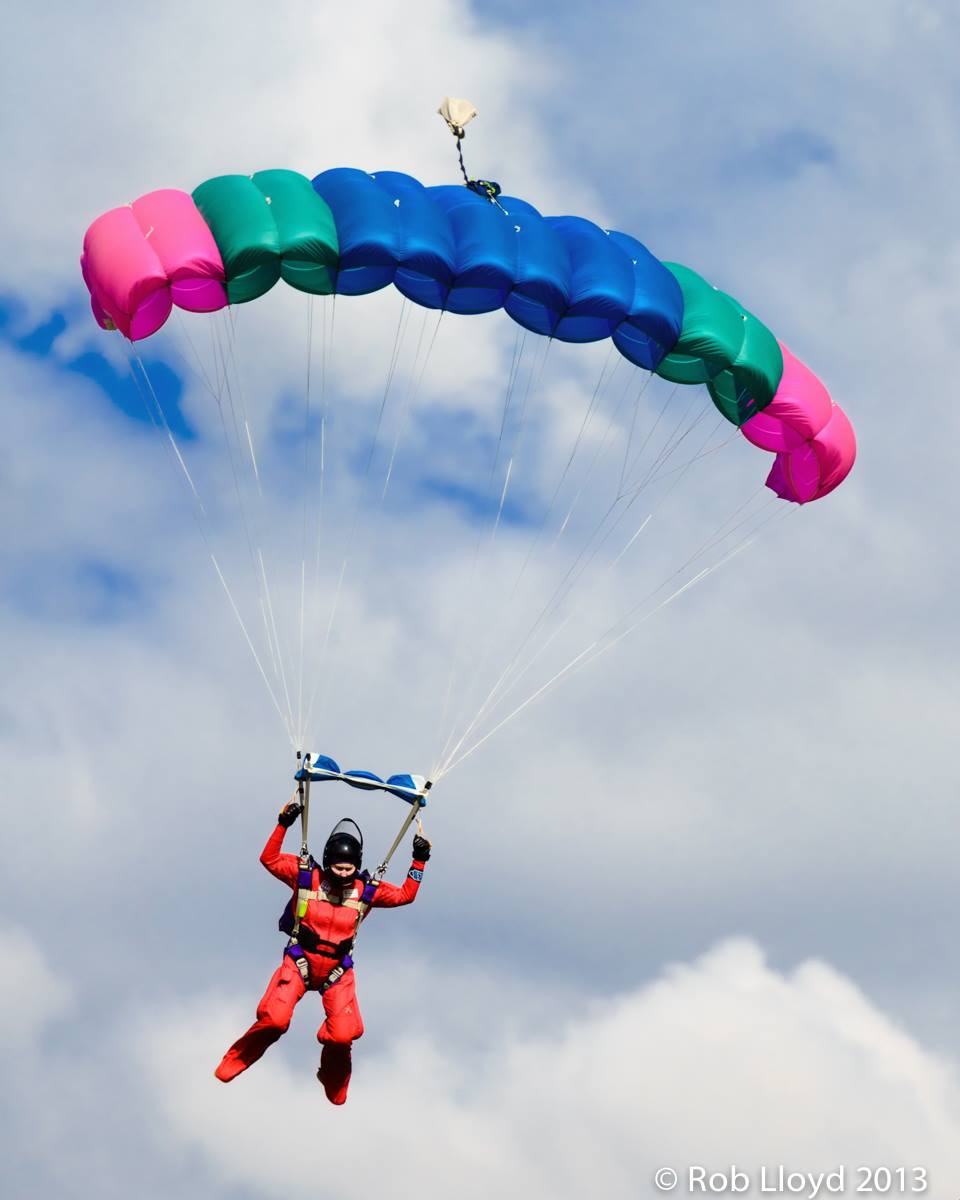
Jane Buckle Interview Saved 1999
Thursday, July 8, 2021
- Team CYPRES
- 7/08/21
- 0
- 30 years CYPRES, General, Saves
Photo above: Rob Lloyd.
As part of this 30th anniversary year, we are looking back at some of the saves involving people who are still working in the skydiving industry – whether they did so at the time of the incident or progressed into a professional role later. In 1999, Jane Buckle was saved by her CYPRES unit. Currently, she is an active instructor, pilot and dropzone operator at Headcorn in the UK.
When the CYPRES was released in 1991 I had already made thousands of jumps, and I didn’t have an AAD in all that time. I was chief instructor and thought it would be setting a good example for everyone to have one. The actual save happened on the 7th of October 1999, which for me was jump number 5,674. I got out of the aircraft with two other people at 8,000 feet. We were doing a little bit of sit flying. Our intention was to go out in a sit position and then go flat at 6,000 feet – diving down to the lowest person. That was the plan. Looking back, it was a pretty loose plan. None of us were really sit flyers – it was all very experimental in those days.
At 6,000 feet, we went flat. I looked around and saw Cathy below me, but couldn’t see the other jumper Baz. Assuming he was above me, I started diving down. As I looked at my altimeter, I turned into him – tracking alongside and slightly above. My head impacted with his hip as he had a big bruise there. That’s the last thing I remember until I came round. I was unconscious for about a minute I suppose, but only fully conscious again after I landed.

In hindsight, it is of course scary to think about what could have happened, especially as at the time I had two young children. They are twins and were three years old. It was sort of scary knowing that I could have left them motherless. It was scary for everyone who witnessed it because they all thought I was going in.
Baz landed next to me and thought I was dead at first. I landed at the top end of the landing area on the runway, and fortunately, there wasn’t a huge amount of wind. I don’t know how long I lay there for, it is a bit hazy in my mind and it was twenty years ago – but I do remember a paramedic arriving on a motorbike because they had called the emergency services before I landed. After that, an ambulance arrived, and then the helicopter. I was a bit resistant, saying that I was fine – but they insisted on putting a collar on me and all that. I remember thinking that they were testing me because they were asking if I wanted to go to the hospital in the ambulance or the helicopter. Of course, I want to go in the helicopter.
I would have one anyway, but getting a CYPRES definitely had something to do with setting a good example. We did have AADs then on our student equipment, but no experienced jumpers wanted to have FXCs on their equipment. These serve their purpose and are still used, but the CYPRES was just so much more reliable – and was this small device that you could not see on the outside of your equipment. No one knew that you had an AAD, so there was no stigma attached – which helped people to think of getting them. Now it is sort of unthinkable. People cannot get their heads around the fact that we used to jump without AADs.

Sometimes my story comes up as a result of a question I get asked, but it is not part of my lesson plan. I don’t hide it, and I tell people the truth – but it is not information I really offer without being prompted. I do think people need to question things more, and as skydiving gets more complex people should know more about their AADs – especially if they are moving to do more high-performance things. Your AAD doesn’t make you invincible. When people started swooping is a good example – needing to question exactly how fast they were going and what that might mean.
I am also a pilot and fly the Caravan, so there is more to be aware of. Students don’t come down with the plane very often, but it does happen from time to time. By the time we get to 1500ft, we have slowed the descent rate right down, and I cannot see ever firing a student CYPRES – but again it is good to always be aware.
#CYPRES30
Adventure, Tips, and Adrenaline
Subscribe to Our Newsletter
By signing up for our newsletter you declare to agree with our privacy policy.

